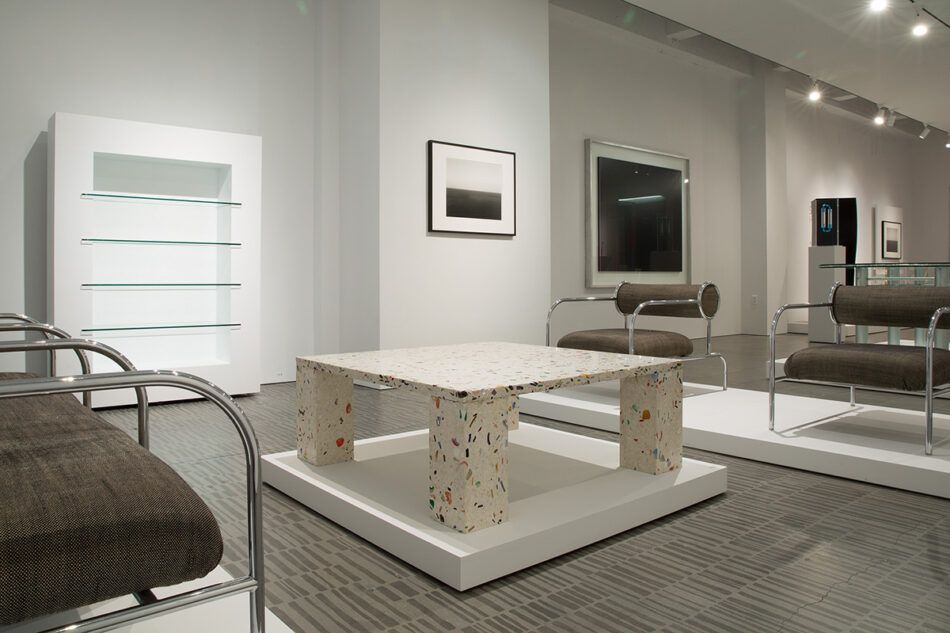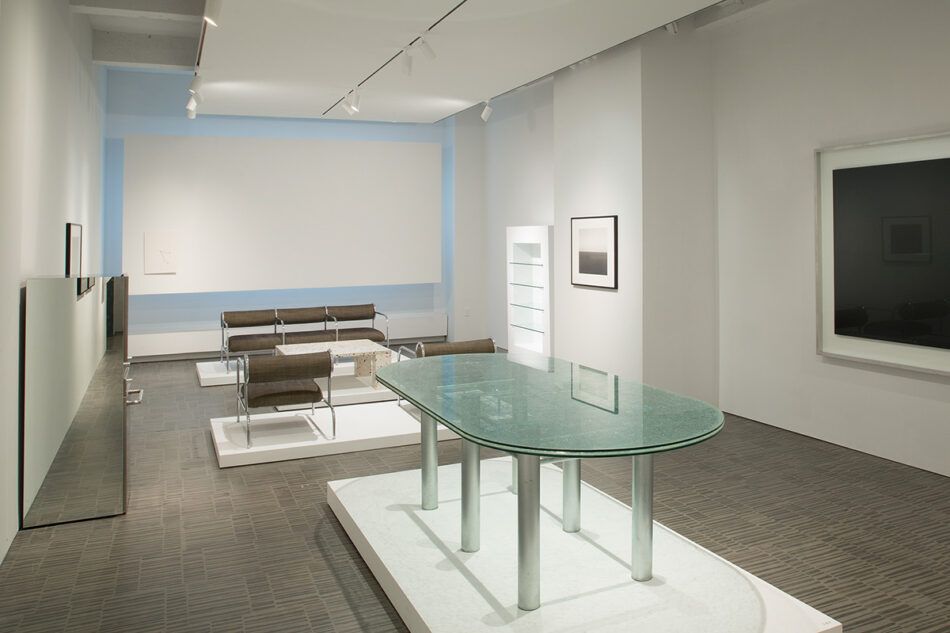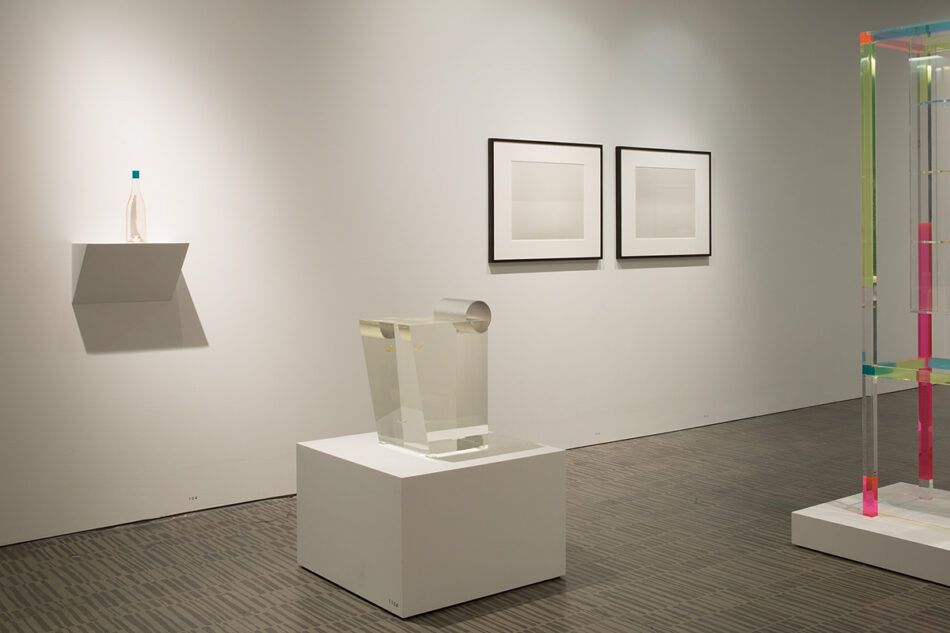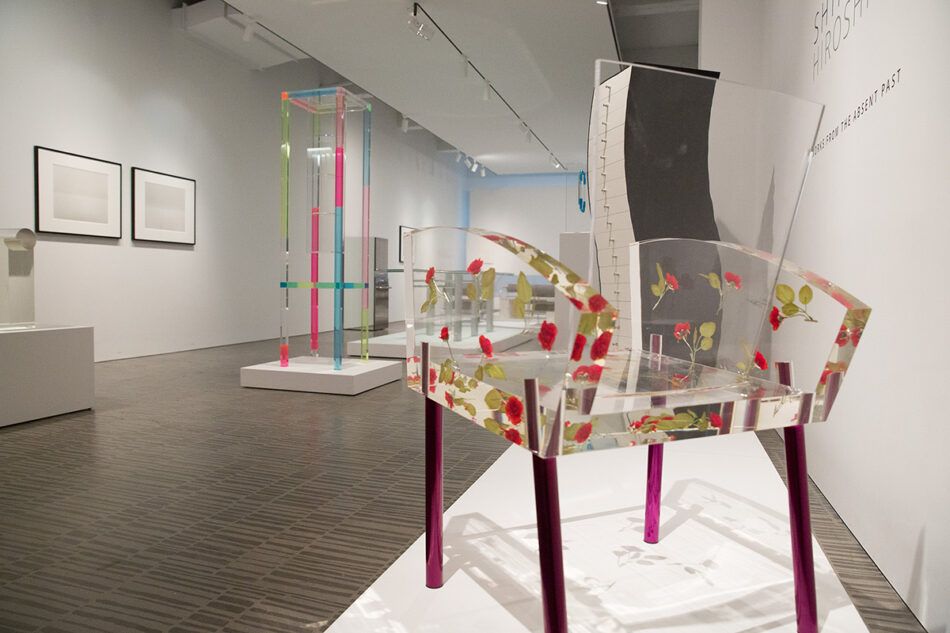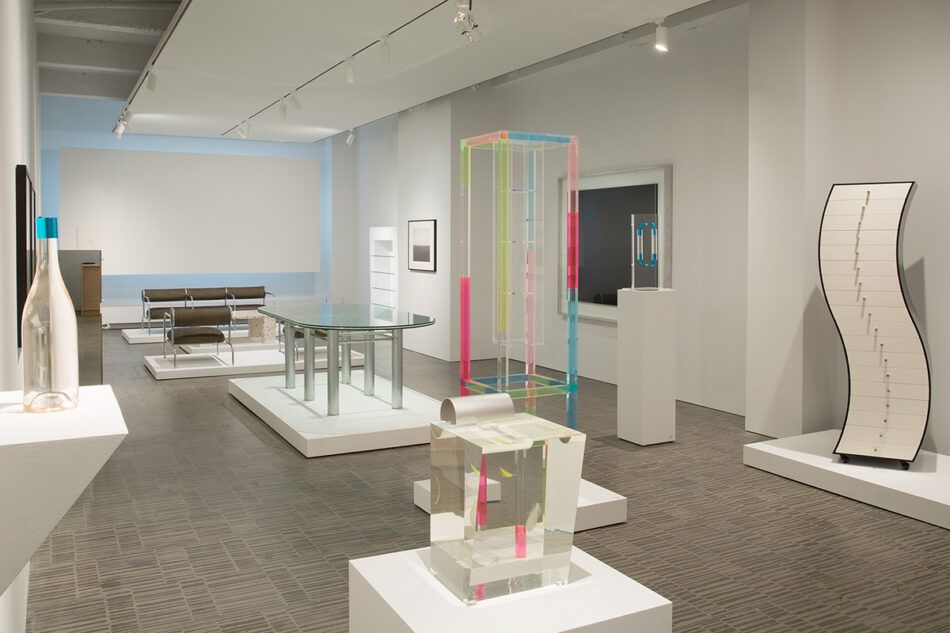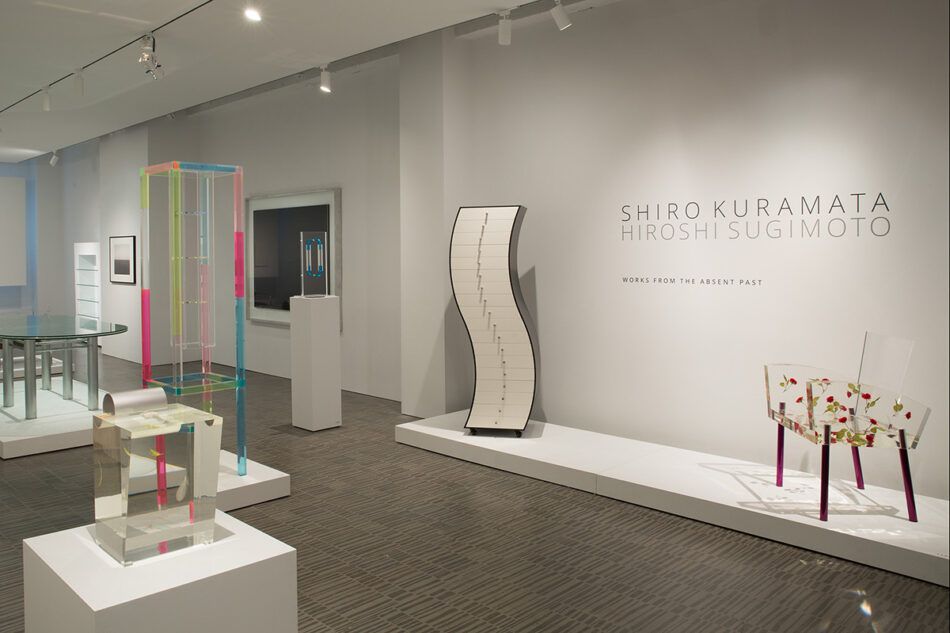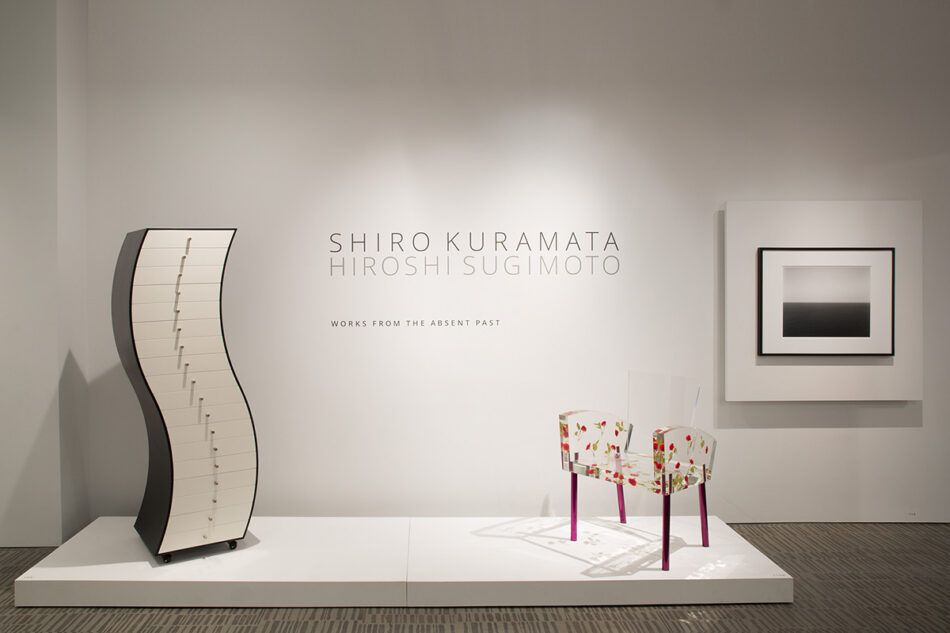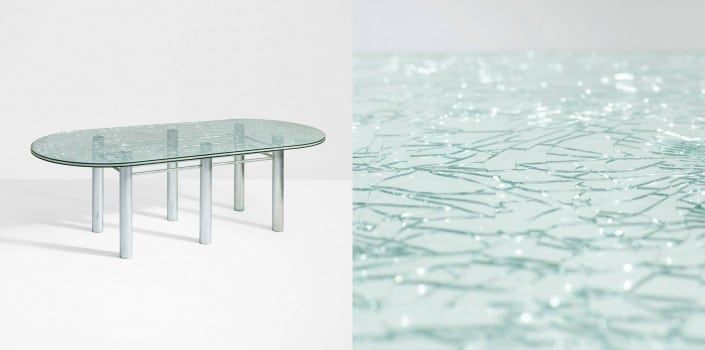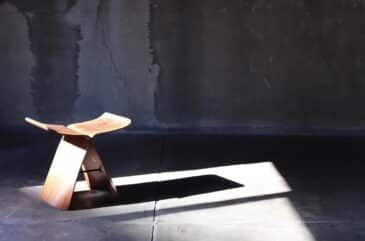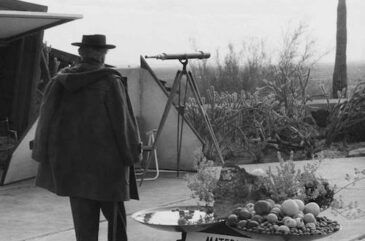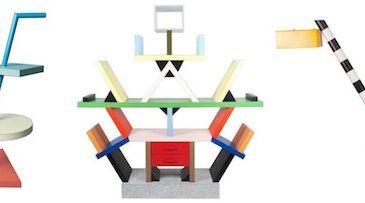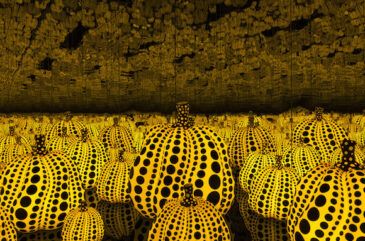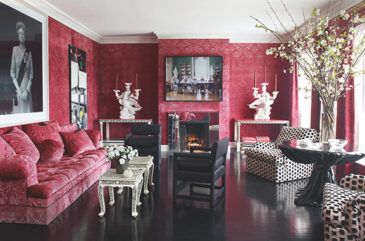The only thing more impressive than the precision of Japanese design? The precision of Japanese design multiplied by two. Wright’s New York gallery presents such a show in “Shiro Kuramata and Hiroshi Sugimoto: Works from the Absent Past,” on view through January 29. The result is a not-to-be-missed exhibition of pivotal works by two of Japan’s premier postmodern creators.
To get a closer look at the show, we sat down with Brent Lewis, director of Wright, and discussed the dialogue between Sugimoto’s fine art photography and Kuramata’s one-of-a-kind and limited edition furniture pieces. Though they never met, both creators explored such themes as light, transparency, silence and the passage of time — and cited a piece of early modern Japanese literature, Junichiro Tanizaki’s 1933 In Praise of Shadows, as a significant point of reference. Lewis posits that both “artist and designer have become recognized for their mastery of their medium, [although] their approaches were very different.”
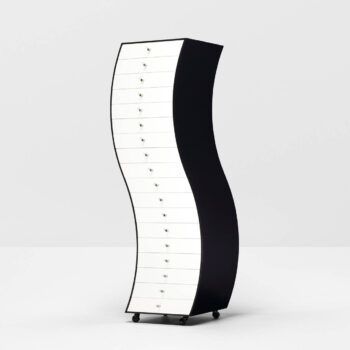 Shiro Kuramata Furniture in Irregular Forms, Side 1, 1970
Shiro Kuramata Furniture in Irregular Forms, Side 1, 1970
“At this moment in his career, Kuramata was a ‘young and intensely serious designer,’ already capable of producing furniture ‘powerful and pure in form,'” says Lewis. Though this wave-like cabinet predated the Memphis Design movement by more than a decade, Kuramata later produced colorful, gestural acrylic pieces in the 1980s under the tutelage of Ettore Sottsass.
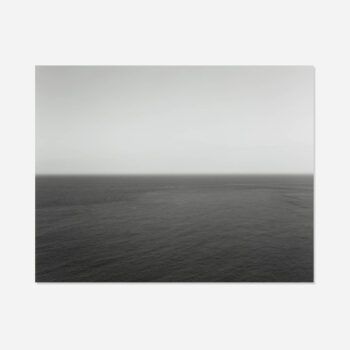
Hiroshi Sugimoto, Yellow Sea, Cheju, 1992
Beginning in the early 1980s, Sugimoto embarked on a self-described “voyage of seeing.” By employing 19th-century photography equipment and techniques, Sugimoto used his seascapes “to answer the question, ‘Can someone today view a scene just as a primitive man might have?’” In contrast to the mutability of landscapes, Sugimoto viewed the sea as a constant. “It is a view which is timeless, yet always of the moment,” declares Lewis.
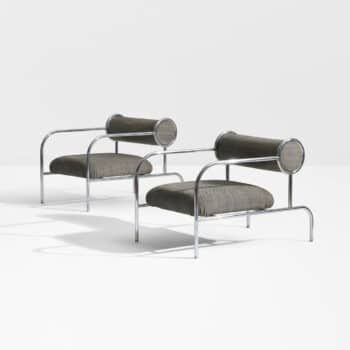
Shiro Kuramata pair of armchairs for the Esprit House, 1982-3
In the 1980s, Tokyo’s Esprit House served as the fashion label’s primary venue for corporate parties and events. Esprit owner Doug Thompkins commissioned Kuramata to furnish the space’s interiors in 1982. These armchairs are emblematic of the designer’s ability to create pieces simultaneously “comfortable and livable while elegant, serious and sensual.”
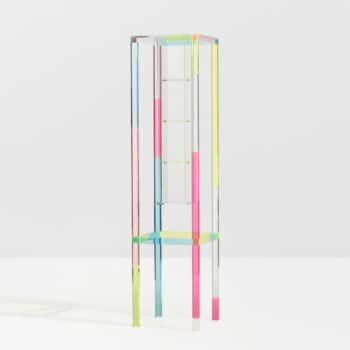
Shiro Kuramata Cabinet de Curiosité for Ishimaru Co., Ltd., 1989
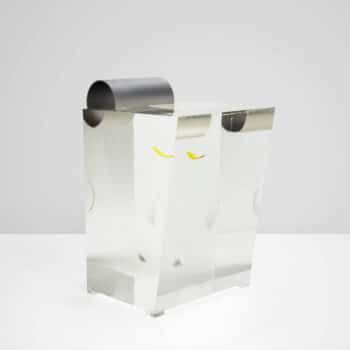
Shiro Kuramata Feather Stool for Ishimaru Co., Ltd., 1990
These two pieces exemplify Kuramata’s more mature work. During Japan’s economic boom, he was “given the budgets to push the boundaries of technique and material.” With the stool, Kuramata took feathers in various colors and suspended them in acrylic (a notably difficult-to-manipulate material). He later used this same technique to suspend rose petals within the structure of a clear acrylic armchair. Both pieces speak to Kuramata’s interest in the theme of timelessness.
Hiroshi Sugimoto, Lake Superior, Cascade River, 2003
Sugimoto’s travels have taken him around the world, from Jamaica’s Caribbean Sea in 1980 to Michigan’s Lake Superior in 2003. This photograph presents a subtle gray palette and soft transition between sea and sky, reminiscent of a two-toned Mark Rothko painting.
Shiro Kuramata Dining Table for Tamotsu Yagi, 1987
“Tamotsu Yagi and Shiro Kuramata were friends in the tight-knit design community in Tokyo. Yagi, a graphic designer, moved to California to become the art director for Esprit.” Using his unique “broken glass” technique, Kuramata designed this one-of-a-kind dining table as a present for his friend’s new San Francisco home. In addition to offering his table, Yagi provided Wright with art direction for their catalogue and exhibition visuals.
“Ultimately,” says Lewis, “I think these pieces will persist. The institutional museum support for [both Kuramata and Sugimoto] is a strong statement for the lasting import of their work.” View these iconic works at Wright’s Madison Avenue gallery now through January 29, 2015, and browse all Kuramata and Sugimoto currently available on 1stdibs.
